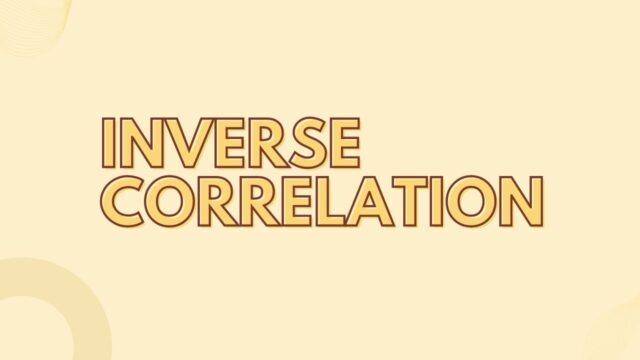
Inverse correlation is a type of relationship between two variables. The term refers to the fact that higher values of one variable are correlated with lower values of the other. The reverse of this relationship is also known as negative correlation. It is one of the strongest forms of correlation, and is commonly used to describe a relationship between two variables. There are many types of inverse relationships, and we will discuss the two most popular types here. You can also learn about parabolic inverse correlation and negative inverse correlation.
Negative Inverse correlation
Negative correlation, also known as inverse relationship, occurs when a higher value of one variable is associated with a lower value of another. Inverse correlation is an important concept when studying statistics. It is helpful to have some background knowledge before interpreting the relationship between two variables. Listed below are some examples of the relationship between variables and their values. This article explains inverse correlation. Also, learn how to interpret inverse correlation charts.
The inverse of a positive correlation is equal to its negative value. For example, if two stocks move in the same direction, but at different rates, this is considered a negative correlation. This is the case when the correlation is less than one. This is known as partial positive correlation, but it is important to remember that correlation is not a causal relationship. The first two steps of determining whether a correlation is positive or negative are the most important. The second step is to determine whether the correlation is high enough. The high correlation level is known as Cohen’s d.
Parabolic inverse correlation
The inverse correlation of two variables can be determined using parabolic graphs. In parabolic graphs, the increase in the independent variable has a smaller impact on the dependent variable than it does on the independent variables at higher levels. In graphing the correlation, a flat curve forms as the independent variable increases while the dependent variable declines. In the opposite case, the relationship between two variables is inverse. This relationship can be applied to any type of data.
Reversal
In the study of statistical data, the reverse correlation method can be used to answer a wide variety of questions. Its most common application is the evaluation of faces for a single trait. In face-space reverse correlation studies, researchers make use of a database of images of faces varying in demographics, age, and emotion. Researchers first determine the number of trials they want to present participants with and how many stimuli to present at one time.
Another inverse correlation is parabolic. In this situation, the independent variable increases at a steeper rate than the dependent variable. The change in the dependent variable is steep at lower values, and becomes more gradual as the independent variable increases. This form of inverse correlation is a useful tool for determining the strength of a specific relationship between two variables. It can also be used for estimating and interpreting mental representations.
Relationship between two variables
A positive or negative correlation between two variables indicates that the two variables move together, but there is no cause-and-effect relationship. This type of relationship is sometimes referred to as an inverse correlation. In either case, the two variables show a downward slope. A bad romantic partner, on the other hand, will not do anything to make you feel better on a bad day. While these types of relationships are far from perfect, they can be quite different from each other.
The inverse correlation between two variables describes how closely a pair of variables is related. For example, Coca-Cola and PepsiCo have a close competition for the same market. When one of them launches a new product, PepsiCo will benefit. Conversely, Coca-Cola will lose market share. This type of relationship is common in highly competitive markets, such as those in the consumer goods sector.
Calculation
Inverse correlation is a statistical measurement of the relationship between two variables. It is used to estimate the benefits of portfolio diversification. Specifically, it can be used to calculate the risk reduction benefits of negatively correlated assets. The definition of inverse correlation is essentially the same as that of correlation. But it can be used to assess the risk reduction benefits of a particular asset, such as gold or oil. There are various methods for calculating the inverse correlation of a pair of variables.
It is determined by calculating the Pearson’s r. This identifies the relationship between two variables. When calculating the correlation, the r value must be smaller than zero. In other words, a negative correlation means that the two variables are not related. To do this, the correlation matrix should contain n variables. If the variables are not identical, the r value is zero. Nevertheless, in cases where the variables are not similar, there are cases where the r is negative.


































